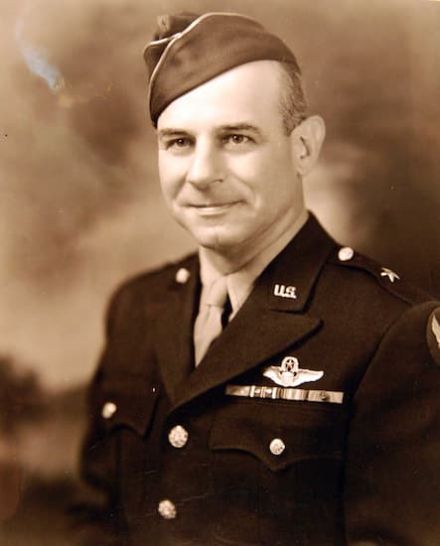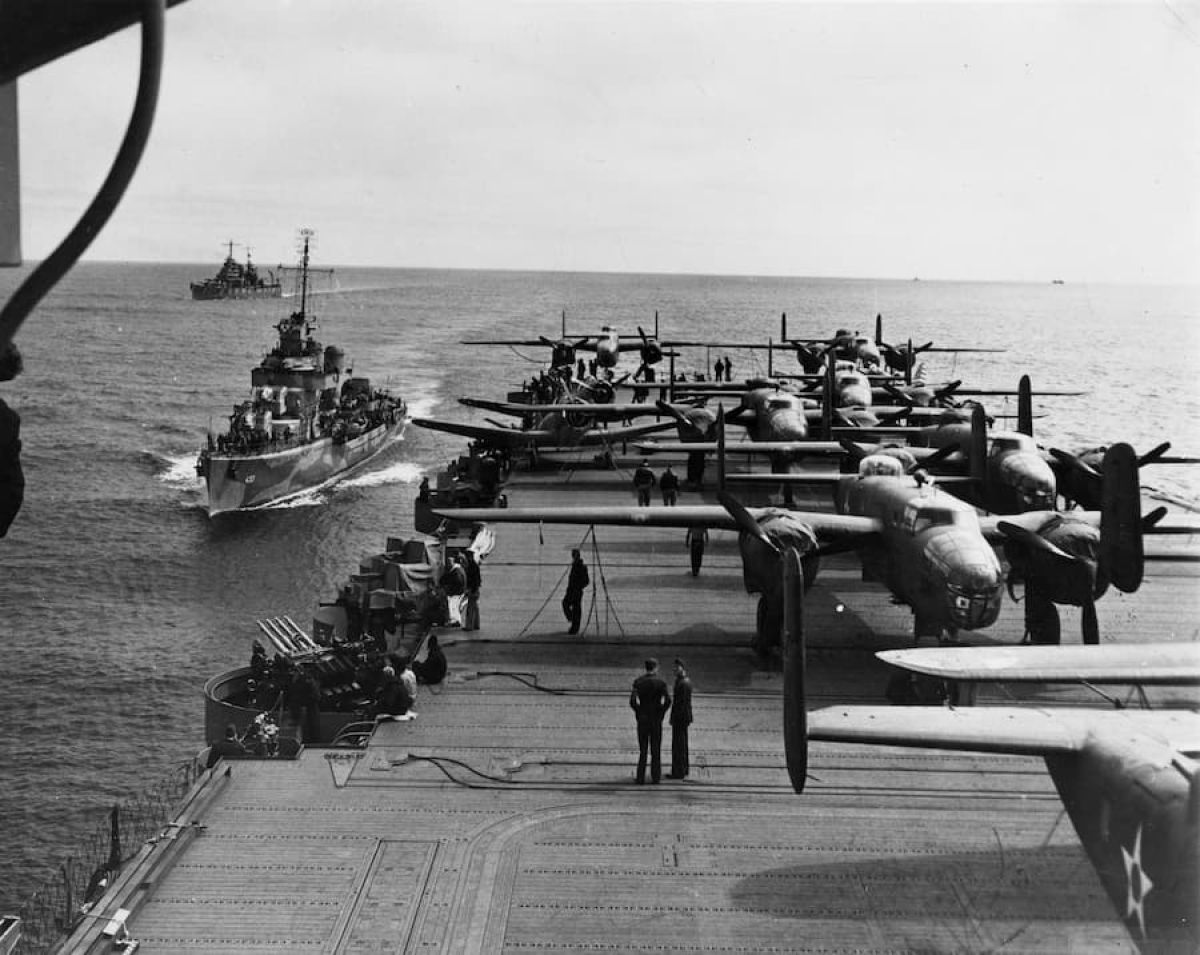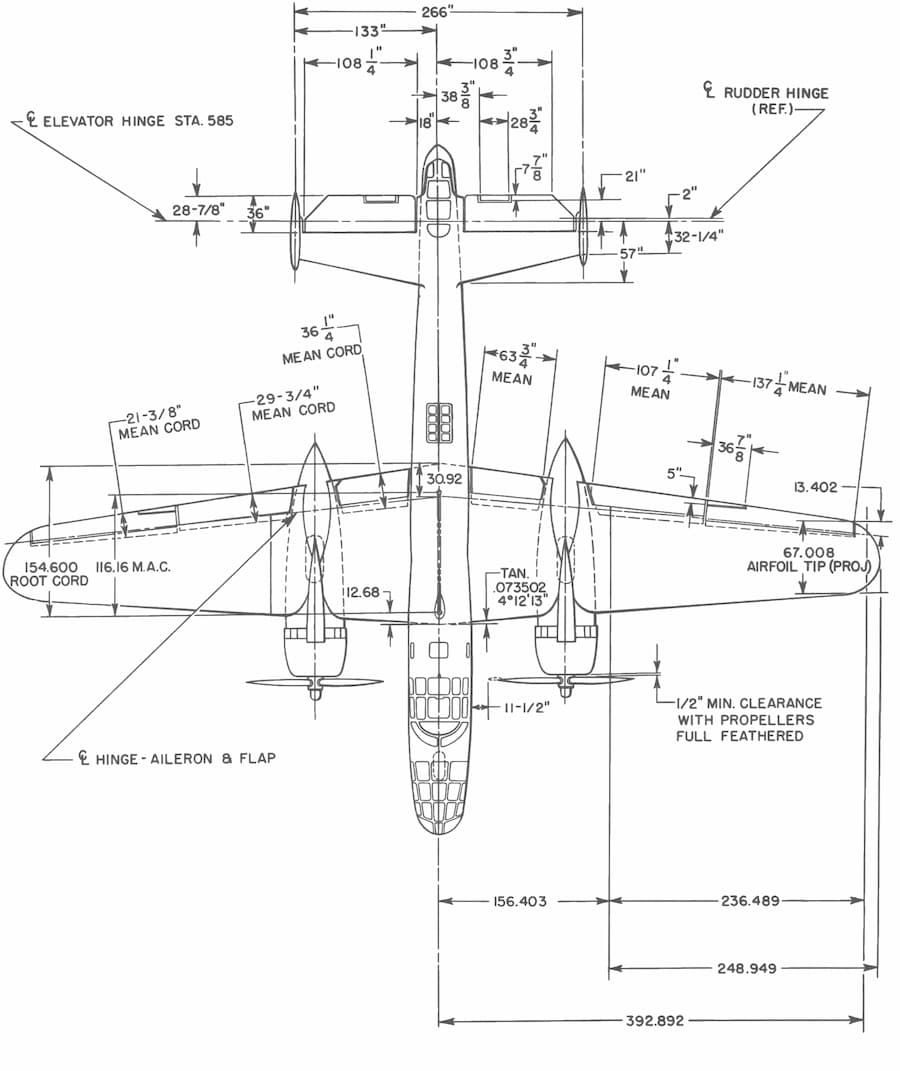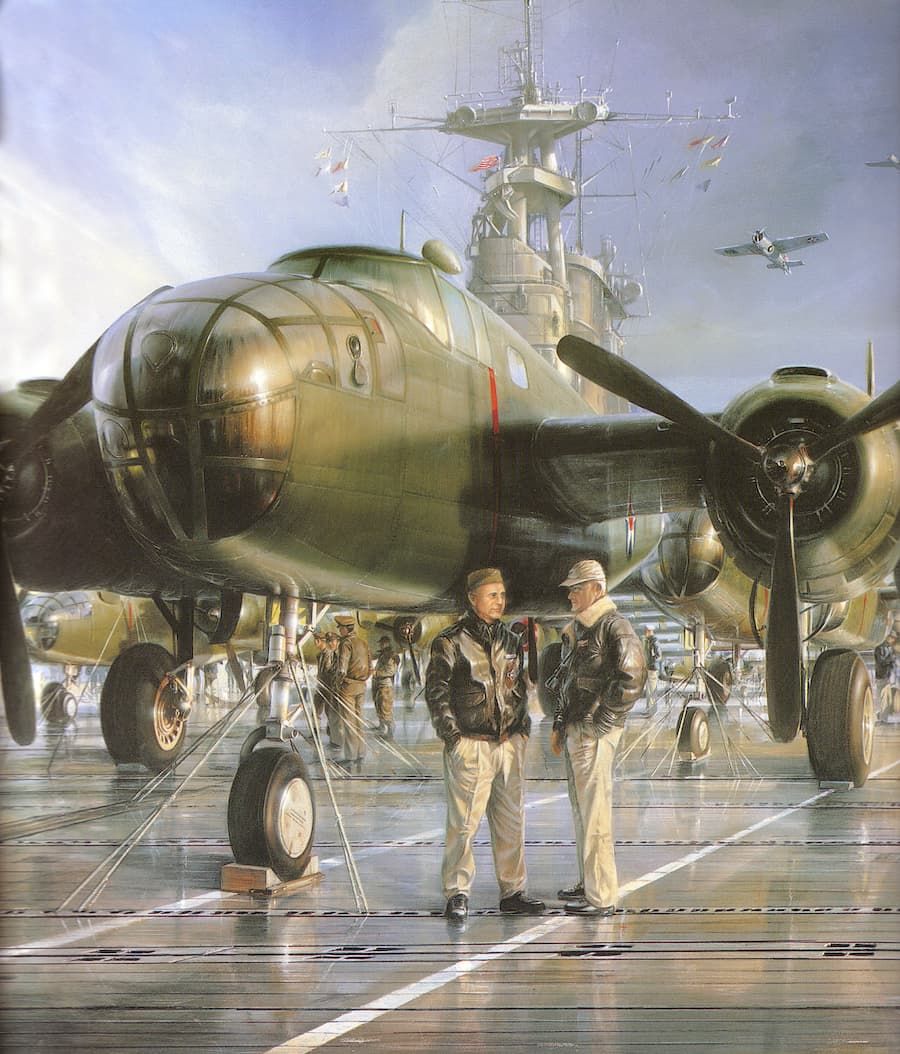The Doolittle Raid

Pearl Harbor & The Tokyo Raid
(or Doolittle Raid)
The Tokyo Raid, better known as the Doolittle Raid, April 18, 1942, was the first American bombing raid on Japan in response to the Japanese attack on Pearl Harbor in December 1941. The raid can therefore best be interpreted as an act of revenge by the Americans to Japan.
The Japanese attack on Pearl Harbor was motivated by a desire for supremacy in Southeast Asia. Japan wanted to rule not only on land but certainly also at sea: they wanted control over the Pacific Ocean.
The elimination of the US Pacific Fleet at Pearl Harbor in Hawaii made them masters of the Pacific Ocean.
In the early years of World War II, Japan was clearly victorious in Southeast Asia. Only after the battle of Midway, June 4, 1942, did the chances of war at sea turn in favor of the Americans.
On land, the supremacy of the Axis power would last for some time. Japan also attacked the European colonies by land and in no time conquered Burma (now Myanmar), Laos, Cambodia, Vietnam, Malaysia, Singapore, Borneo, the Dutch East Indies (now Indonesia) and also Thailand. It was at war with China and will later enter the Indies as well.
The European colonies were easy prey because British, French and Dutch armies were at war with Germany or had already capitulated. Japan had a peace treaty with Russia.
The Americans wanted revenge after Pearl Harbor. After all, the logistical and human toll of the attack on Pearl Harbor was vast. The American revenge action would also come in the form of a military action by air, better known as the Doolittle Raid or Tokyo Raid, on April 18, 1942.

The Doolittle Raid: an unlikely story


The Americans were unable to cause great material damage with their air raid on Japanese soil, but the bombing was not only part of an act of revenge: it was also a form of American psychological warfare against Japan.
With this action, America also wanted Japan to feel that it was not safe on their own island.
The Doolittle Raid was a spectacular raid that required enormous courage and daring from the 16 crews assigned to the 16 Mitchell B-25 bombers.
From the United States, it was impossible for the bombers to bomb Japan directly at the time. The technology at the time did not allow such a distance to be bridged. Doolittle and his Raiders still managed to drop bombs over Tokyo and industrial areas in Japan.
Although it was then considered technically impossible to take off from an aircraft carrier, Doolittle and his Raiders did it anyway.
The Doolittle Raid with its 80 crew and 16 aircraft had only one mission, and it was a one-way mission. 16 bombers could take off from an aircraft carrier, knowing that they would not return to land on it. Both the distance back to the aircraft carrier and the known technology did not allow this.
As soon as they had left the Japanese island behind, the American pilots crashed their bombers into Chinese territory which was often occupied by Japan. They used their parachute to land safely. There were also crash landings in the sea.
However, the original scenario was for the bombers to land safely in free China, but the mission did not go as planned.
It was ultimately up to the bomber crews to make sure they made it back to America in one piece. Although most of the crashed Americans succeeded, some brave men lost their lives in the Raid. Others remained active in Southeast Asia throughout World War II.
Behind the Doolittle Raid is an unlikely story. This will also become apparent when you go through the website.
The Attack, a calculated risk
This website wants to map and visualize in a clear way how this daring American action came about and was carried out.
The attack must certainly be seen in the spirit of the time: without GPS or digital maps, without missiles or lasers, the Americans plunged into this unprecedented act of revenge. They had no email or chat applications to fall back on. A compass, sextants and maps and a sharp memory were the only tools on board the planes. It was a time of war with extreme confusion, without today's technologies.
The action was a joint venture between the United States Navy and United States Air Force. During World War II, the US Air Force, the United States Army Air Forces (USAAF), was still part of the US Ground Army.
The USAAF was the air force division of the United States Army during and shortly after World War II. It was therefore the direct predecessor of the current United States Air Force. At its peak, in 1944, the USAAF had 2.4 million troops, 80,000 aircraft and 783 airfields.
The USAAF emerged from the Air Corps in 1941 and was active until 1947. Unlike the US, where the USAAF remained part of the ground army, other countries then had their air forces separate from the army. However, the United States Army Air Forces (USAAF) had its own command.
The Doolittle Raid (as previously mentioned it was actually called the Tokyo Raid) showed that military leaders must be open to innovative solutions and accept some degree of calculated risk.
While working on this website I sometimes thought/think about the young, but very brave guys who didn't survive the Tokyo Raid as crew of one of the 16 bombers.
Three of them were executed by the Japanese, two of them drowned, one died of deprivation as a prisoner of war and one crew member died in a suspected cliff fall. Twelve others were killed in missions they completed during World War II, after carrying out the Doolittle Raid. The 50 civilian deaths that occurred during the Raid should also be considered.

About this project

The Doolittle Raid is and remains a spectacular and completely truthful story. It is a story that needs to be told and not locked away in archives. Courage and self-sacrifice are the code words. Excitement and dare the ingredients. Courage and perseverance will prove to be trump cards.
This website has been online since April 2023, the intention is to update it regularly with details of the Raid that I can find in various sources.
In time I would like to translate this website into English. But Dutch, my native language, will be given priority and will serve as the basis for translation into any languages other than English.
As webmaster of this website, I wish you a pleasant and interesting stay here. If you have any questions or comments, you can always contact me.
I thank the children of the Raiders. They also do their bit to keep alive the improbable action of their fathers. I could and can always consult them.
I also thank Michel Baghuis of The Stekkedoos for the technical support in building this website.
Also, a word of thanks to Najima Gueddar. She was responsible for improving and adapting the Dutch texts and translating them into English.
My interest in this story is purely historical.
I would like to dedicate the website to my sons for whom I hope they never have to experience a war.
Geert Rottiers – Schelle – Belgium
April 2023